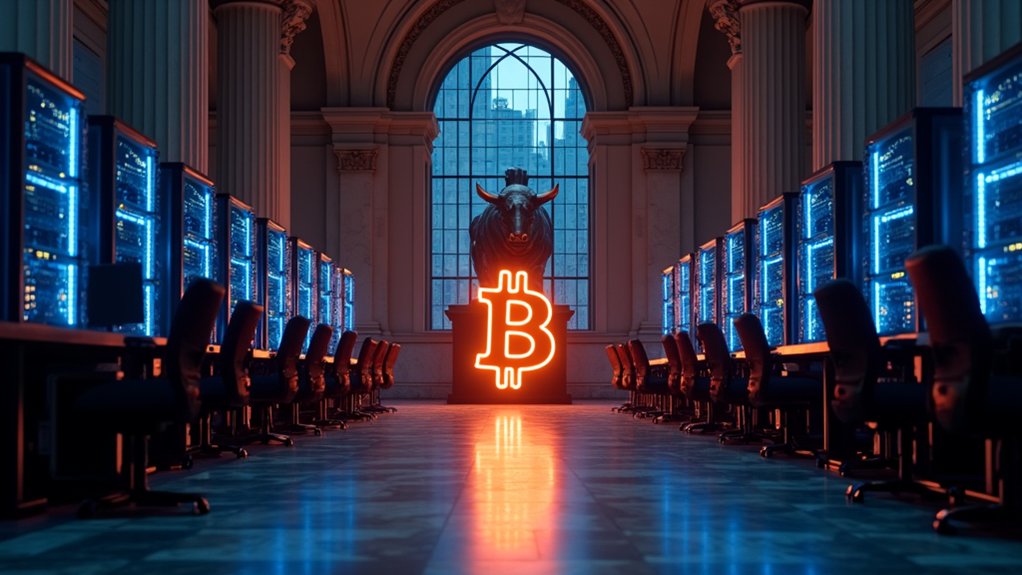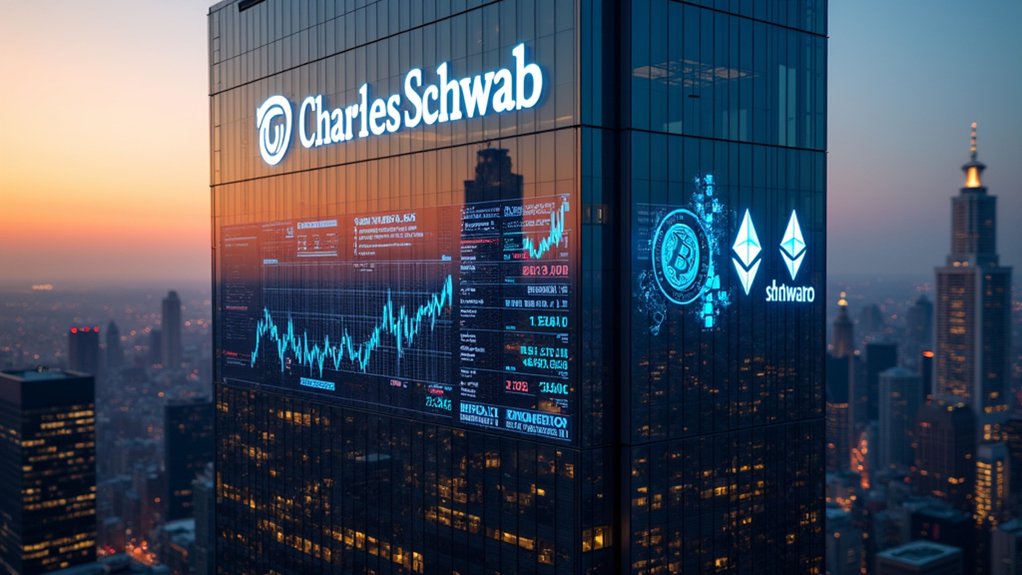While banks project an image of stability and security, the financial sector faces a perfect storm of risks that could trigger widespread institutional collapse. The numbers are staggering – up to $2 trillion in unrealized losses from rising interest rates alone. That’s not exactly pocket change.
And here’s the kicker: banks are leveraged to the hilt, operating on just 10% equity. Do the math – even small losses can spell disaster.
Commercial real estate is turning into a nightmare scenario. A whopping 44% of office loans are underwater, and one-third of all commercial property loans face serious refinancing challenges. Good luck getting those refinanced at today’s rates. Regional banks are particularly vulnerable with 25 to 30 percent of their assets tied up in commercial real estate loans. It’s like watching a slow-motion train wreck, especially for smaller regional banks that went all-in on commercial real estate.
Regional banks are walking a tightrope with underwater office loans and impossible refinancing odds. It’s a commercial real estate disaster in the making.
The concentration problem is real, and it’s spectacular. Just ask Silicon Valley Bank – oh wait, you can’t, because they collapsed. When banks put all their eggs in one basket, whether it’s tech deposits or commercial real estate, they’re basically playing Russian roulette with their survival. Thankfully, account holders are protected by FDIC insurance limits up to $250,000 per depositor.
And when depositors get spooked, they run for the exits faster than teenagers at a chaperoned dance.
Here’s a sobering thought: 63 banks are already on the FDIC’s Problem Bank List. Since 2001, 567 banks have failed. That’s not ancient history – that’s a warning sign flashing in neon.
The system’s inherent instability is showing its cracks, and it doesn’t take much to start a domino effect. One bank’s problems quickly become everyone’s problems.
The harsh reality? Banks are far more fragile than they appear. When you’re running on 90% debt financing, even minor setbacks can turn catastrophic.
Add in rising interest rates, commercial real estate distress, and concentrated risk exposures, and you’ve got a recipe for disaster. The banking system’s foundation isn’t just shaking – it’s crumbling.
And when the dust settles, we might find ourselves wondering how we didn’t see it coming.





